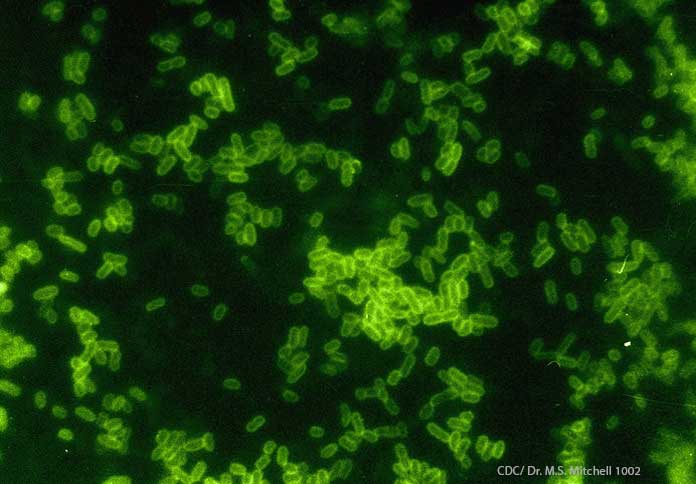The CDC’s Morbidity and Mortality Weekly Report issued Notes from the Field on December 30, 2016 about an outbreak of E. coli O157 infections associated with Goat Dairy Farm Visits in Connecticut. On March 24, 2016, the Connecticut Department of Public Health identified seven patients who were sickened with culture confirmed Shiga toxin-producing Escherichia coli (STEC) infections.
The patients ranged in age from 2 to 25 years. All of them reported bloody diarrhea. Four patients were evaluated in an emergency department. Three of those people were hospitalized, and two developed hemolytic uremic syndrome (HUS). The consequences of HUS can include kidney failure, seizures, and death. Six of the seven patients said they visited the same goat dairy farm in southeastern Connecticut the week before they got sick.
The Connecticut DPH initiated an investigation and was joined by the Connecticut Department of Agriculture, the CDC, and the local health district to identify the source of the infection and to find more potential cases. In the end, by using PulseNet and lab tests, officials identified 50 people who were sickened in this outbreak from March to April 2016, including 47 who had an epidemiologic link to the goat farm.
The Investigation
PulseNet, the national laboratory network that surveys foodborne diseases, used pulsed-field gel electrophoresis (PFGE) to identify the outbreak strain as STEC 0157. Confirmed cases with laboratory confirmed infections or physician-diagnosed HUS were interviewed about their visit. Environmental samples were collected at the farm and cultured. They were compared with patient isolates using PFGE and whole genome sequencing (WGS).
Officials estimated that 1,500 people visited the farm during the time frame of March 5 – 24, 2016, before the local health department issued a legal order to end public visits. Of those sickened, 40 had visited the farm or had contact with goats on the farm, and 6 had contact with someone who had visited the farm.
Of the 50 confirmed cases, three had no link to the goat farm, and one person had visited the farm but had ho symptoms. The median age of the patients was 5 years, which is typical of these types of outbreaks. Young children are more susceptible to contracting E. coli infections from animals, and are more likely to develop HUS from that infection.
Investigators tested 61 environmental samples. Twenty eight of those, or 46%, yielded STEC O157. Sixteen of seventeen fecal samples collected from goats on the farm yielded STEC O157. All of the environmental, fecal, and patient samples were indistinguishable from one another when analyzed with PFGE, and were closely related genetically by WGS.
Officials found that the design of the facility let people come in direct contact with goats and their soiled bedding. In addition, there were no hand washing stations at the facility, and no signs that would have informed visitors about potential risks.
Lawsuits
Unfortunately, outbreaks such as this one have been common in the last few years. Farms and petting zoos pose risks to young children. Direct contact with ruminant animals, such as cows and goats, that carry E. coli bacteria in their intestines, can lead to serious illness.

Our law firm recently won $7.5 million for a young child who was sickened after a visit to Dehn’s Pumpkin Farm in Minnesota in 2013. The child suffered severe kidney damage from an E. coli O157:H7 infection after visiting the animal attraction at that farm. Six others were sickened in that outbreak, which was linked by the Minnesota Department of Health to cows that the children were allowed to pet and feed.
Just this year, an E. coli O157:H7 outbreak at the Cider Mill Ciderfest in Louisville, Kansas sickened seven people. Animals were at the farm for that event. And in August 2016, an E. coli and HUS outbreak that may have been associated with the Washington County Fair in Oregon sickened several people.
It’s just too easy for small children, who are fascinated by animals, to touch that animal and then put their fingers into their mouths. It only takes 10 E. coli bacteria to cause a serious illness. And these ruminant animals shed the pathogenic bacteria in their feces, which can get on the animal’s coat.
If you or a loved one contracted an E. coli infection after visiting a petting zoo, farm, fair, or other attraction where ruminant animals were present, contact our experienced attorneys for help. These facilities should provide hand washing stations and signage to warn visitors of possible risks. Our attorneys have helped families get compensation for illnesses from food and animal contact.
